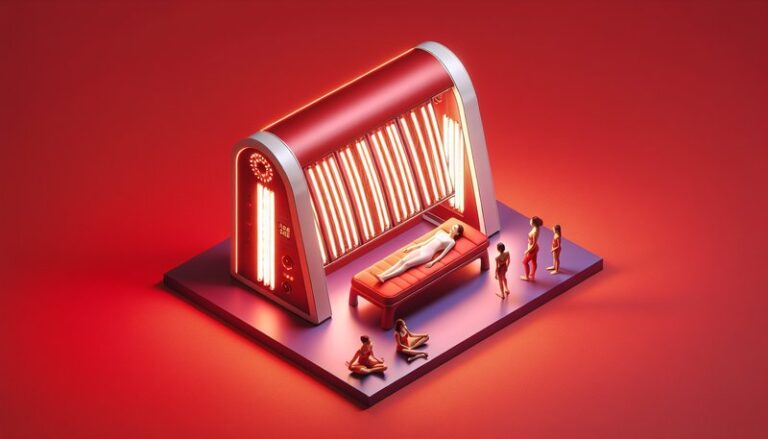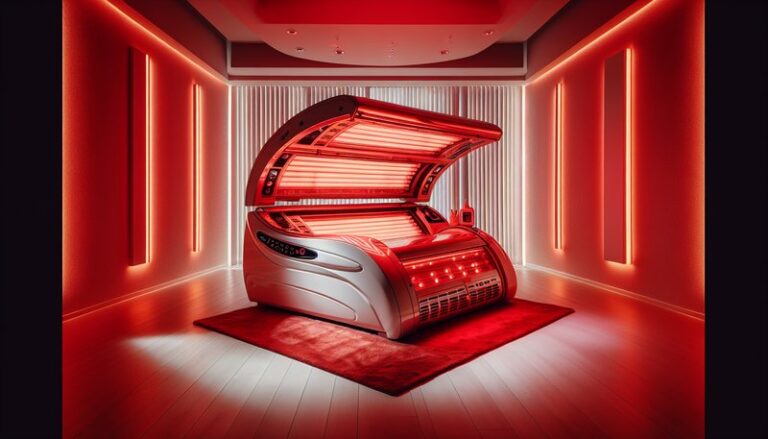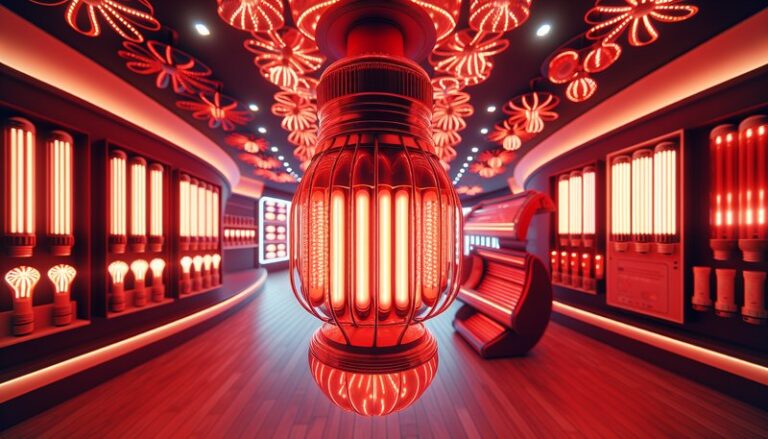Can Red Light Therapy Increase Vitamin D?
Can Red Light Therapy Increase Vitamin D?
Could the glow of red light therapy serve a dual purpose, enhancing your skin’s health while also playing a vital role in vitamin D production?
This article will explore the relationship between red light therapy and vitamin D synthesis. We will delve into the mechanics of red light therapy, its benefits, and whether it has any impact on vitamin D levels in the body.
Key Takeaways
- Red light therapy primarily aids in skin rejuvenation and healing, rather than directly increasing vitamin D levels.
- Vitamin D synthesis occurs mainly due to exposure to UVB rays from sunlight, not red light.
- Understanding these nuances can help users of red light therapy align their expectations and health goals.
What is Red Light Therapy?
Red light therapy (RLT) is a treatment that exposes the skin to low levels of red or near-infrared light. It is primarily used for its potential benefits that include skin healing, reducing inflammation, and pain relief. In professional settings, devices emitting specific wavelengths of light are employed, while at-home devices have become widely available for consumers.
RLT works by penetrating the skin’s layers, where it can stimulate cellular processes. This stimulation is believed to enhance mitochondria function, leading to increased ATP production, promoting healing and regeneration in skin cells and tissues.
What are the Benefits of Red Light Therapy?
The following points highlight the myriad advantages associated with red light therapy, which goes beyond mere cosmetic enhancements.
Cellular Repair and Regeneration
Red light therapy accelerates healing in various tissues, from skin injuries to muscle strain. Numerous studies have shown its efficacy in improving recovery times for wounds and enhancing overall skin tone.
Reduction of Inflammation
This therapy is known to decrease inflammation, which can lead to pain relief and improved overall health. It may be particularly beneficial for chronic inflammatory conditions, providing a non-invasive option for symptom management.
Enhanced Mood and Sleep Quality
Some research suggests that red light exposure can improve sleep and mood by influencing melatonin production. People using red light therapy report better sleep patterns and reduced feelings of anxiety.
Skin Aging Reversal
RLT may significantly impact skin texture and elasticity, combatting signs of aging like wrinkles and fine lines. Users often notice a more youthful appearance after regular treatments.
Is it Possible to Increase Vitamin D with Red Light Therapy?
While red light therapy provides numerous benefits, it does not directly increase vitamin D levels. Vitamin D is synthesized through the skin when exposed to UVB rays from sunlight. Red light, however, does not have the same effects due to its specific wavelength range.
What are the Advantages of Traditional Sunlight Exposure for Vitamin D?
Natural sunlight remains the most effective source for vitamin D synthesis in the body.
Learn the background in Are Red Light Therapy Results Permanent?
Health Benefits of Vitamin D
Vitamin D plays a critical role in bone health, immune function, and mood regulation, making adequate levels essential for overall wellness.
Convenience and Cost-Effectiveness of Sunlight Exposure
Exposing yourself to sunlight is easily accessible and free of charge, unlike specialized therapies or supplements.
What are the Things to Consider Before Using Red Light Therapy?
Before starting red light therapy, it’s essential to consider various factors to maximize benefits and ensure safety.
Skin Type and Sensitivity
Individuals with certain skin conditions or sensitivities may need to proceed cautiously. Consulting with a healthcare provider before initiating therapy is crucial to avoid adverse reactions.
Frequency and Duration of Treatment
Establishing an appropriate frequency and time for therapy sessions is vital for achieving results. Too little exposure may yield no benefits, while too much could lead to skin irritation.
Equipment Quality
Not all red light devices are created equal. Evaluating and choosing high-quality equipment ensures optimal wavelengths and effectiveness.
What are the Alternatives to Red Light Therapy?
There are various viable alternatives for skin rejuvenation and health enhancement without the use of red light therapy.
Vitamin D Supplements
Take vitamin D supplements to directly enhance your body’s levels, especially during months with limited sunlight. Consult with a healthcare professional for appropriate dosage.
Natural Sunlight
Spend time outdoors when the sun is out for a safe and effective way to boost vitamin D levels. Aim for about 10-30 minutes of sun exposure several times a week, depending on skin type.
For an in-depth look, see Does Red Light Help Eczema?
Dietary Sources of Vitamin D
Incorporate foods rich in vitamin D, such as fatty fish, egg yolks, and fortified products. This approach provides a natural way to support vitamin D levels without extensive sun exposure.
Conclusion: Is it Recommended to Rely on Red Light Therapy for Vitamin D?
In summary, while red light therapy offers multiple health benefits, it is not a viable method for increasing vitamin D levels. Sunlight exposure, diet, and supplements remain the preferred routes for maintaining adequate vitamin D levels. When considering red light therapy, users should focus on its distinct advantages without the expectation of enhancing vitamin D synthesis.
Frequently Asked Questions
Can red light therapy help with skin conditions?
Yes, red light therapy has been shown to improve various skin conditions, such as acne, eczema, and psoriasis. Its anti-inflammatory properties can promote faster healing and reduce symptoms.
How long does it take to see results from red light therapy?
Results can vary depending on the individual and the condition treated. Some users report visible improvements within a few sessions, while others may experience gradual changes over several weeks.
Is it safe to use red light therapy at home?
Generally, home devices are safe when used according to the manufacturer’s instructions. However, users should ensure they choose reputable brands and consult professionals if uncertain.
How often should I use red light therapy?
Usage varies based on individual goals and device recommendations. Many experts suggest starting with sessions several times a week, gradually adjusting based on results.
Can I use red light therapy alongside other treatments?
Yes, red light therapy is often complementary and can be used alongside other treatment modalities. However, it’s recommended to discuss your full treatment plan with a health professional for optimal results.






